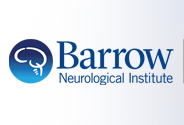Robotic-Assisted Navigation for Stereotactic Neurosurgery: A Cadaveric Investigation of Accuracy, Time, and Radiation.
Document Type
Article
Abstract
BACKGROUND AND OBJECTIVES: Despite frequent use, stereotactic head frames require manual coordinate calculations and manual frame settings that are associated with human error. This study examines freestanding robot-assisted navigation (RAN) as a means to reduce the drawbacks of traditional cranial stereotaxy and improve targeting accuracy.
METHODS: Seven cadaveric human torsos with heads were tested with 8 anatomic coordinates selected for lead placement mirrored in each hemisphere. Right and left hemispheres of the brain were randomly assigned to either the traditional stereotactic arc-based (ARC) group or the RAN group. Both target accuracy and trajectory accuracy were measured. Procedural time and the radiation required for registration were also measured.
RESULTS: The accuracy of the RAN group was significantly greater than that of the ARC group in both target (1.2 ± 0.5 mm vs 1.7 ± 1.2 mm, P = .005) and trajectory (0.9 ± 0.6 mm vs 1.3 ± 0.9 mm, P = .004) measurements. Total procedural time was also significantly faster for the RAN group than for the ARC group (44.6 ± 7.7 minutes vs 86.0 ± 12.5 minutes, P < .001). The RAN group had significantly reduced time per electrode placement (2.9 ± 0.9 minutes vs 5.8 ± 2.0 minutes, P < .001) and significantly reduced radiation during registration (1.9 ± 1.1 mGy vs 76.2 ± 5.0 mGy, P < .001) compared with the ARC group.
CONCLUSION: In this cadaveric study, cranial leads were placed faster and with greater accuracy using RAN than those placed with conventional stereotactic arc-based technique. RAN also required significantly less radiation to register the specimen's coordinate system to the planned trajectories. Clinical testing should be performed to further investigate RAN for stereotactic cranial surgery.
Publication Date
12-6-2023
Publication Title
Oper Neurosurg (Hagerstown)
ISSN
2332-4260
Volume
26
Issue
5
First Page
568
Last Page
575
PubMed ID
38054727
Digital Object Identifier (DOI)
10.1227/ons.0000000000001024
Recommended Citation
Anderson, William; Ponce, Francisco A; Kinsman, Michael J; Sani, Sepehr; Hwang, Brian; Ghinda, Diana; Kogan, Michael; Mahoney, Jonathan M; Amin, Dhara B; Van Horn, Margaret; McGuckin, Joshua P; Razo-Castaneda, Dominic; and Bucklen, Brandon S, "Robotic-Assisted Navigation for Stereotactic Neurosurgery: A Cadaveric Investigation of Accuracy, Time, and Radiation." (2023). Neurosurgery. 2066.
https://scholar.barrowneuro.org/neurosurgery/2066


